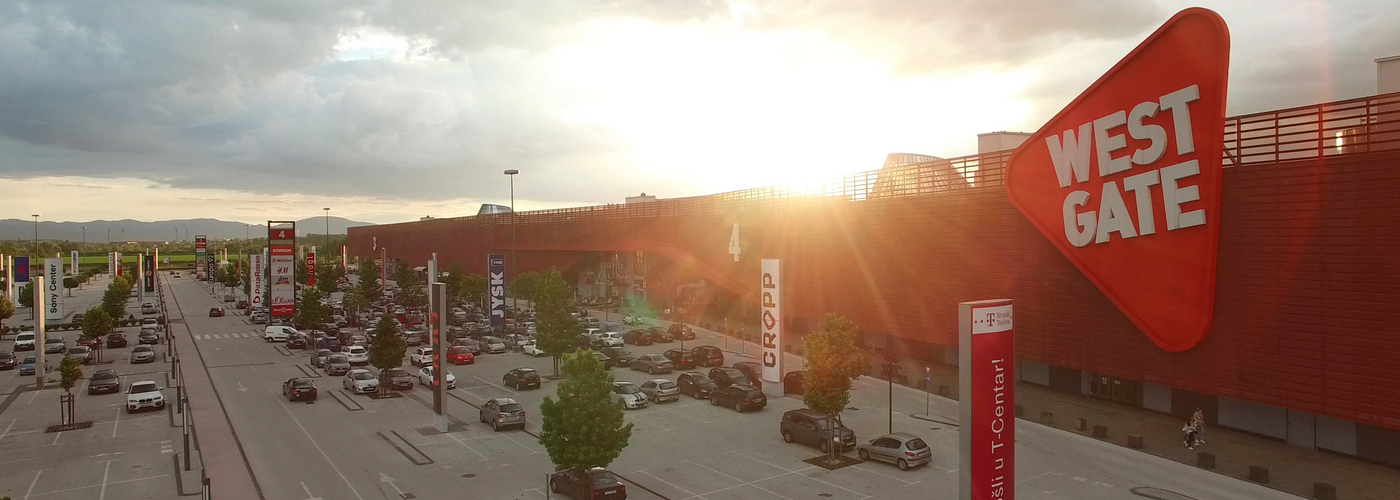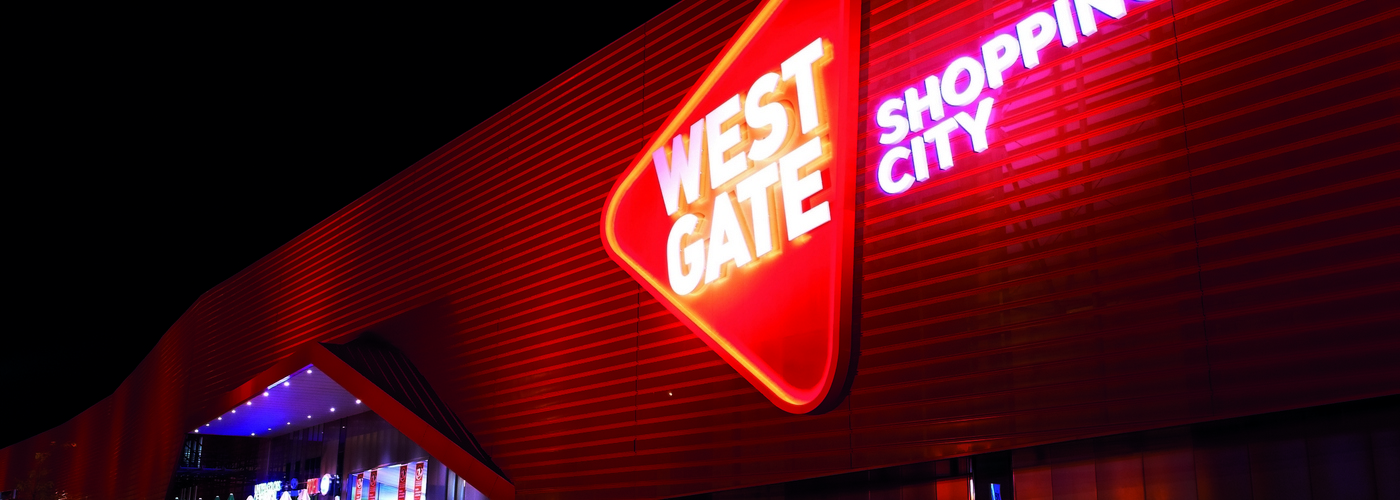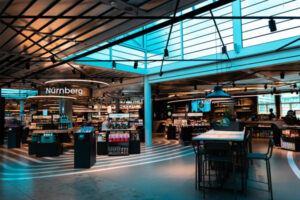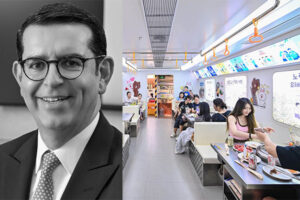ACROSS: What is new behind the scenes at Westgate?
DENIS CUPIC: In April 2018, the ownership structure of Westgate Shopping City changed, and Mr. Kirchmayr and Plus City exited the company.
Focus Invest, which is now the sole owner of Westgate, has appointed Mr. Baric as the company CEO, and management of the mall has been awarded to the F.O. / Asset and F.O. / Development divisions of F.O. / Group Croatia’s leading provider of integrated real estate management.
I have been appointed Head of Asset Management and lead a strong team committed to Westgate. A stronger service-oriented structure at the center and the operating company has been implemented. The position of Westgate will be strengthened, and a much stronger identity within the local market will develop.
ACROSS: What were the reasons behind the change of ownership?
CUPIC: Since the beginning of 2000, Focus Invest has been a majority shareholder of the development companies. Over the last few years, center management has been appointed by Plus City, a minority shareholder. Since Focus Invest is a shareholder of Shopping City Zagreb Zone, which surrounds Westgate, all management and communication functions were bundled under the responsibility of a sole owner.
In September, the zone itself was renamed to Westgate Zone and will serve as a strong harmonizing driver for the entire location. Zone usage primarily consists of retail, entertainment, HTL, sports, and a smaller office hub, which complements Westgate, thereby creating the largest mall in Croatia, CEE, and SEE. Zone itself counts more than 500,000 sq m of fully infrastructurally connected and developed land plots that are available for swift construction starts.
ACROSS: How will the change of ownership affect tenants and customers?
CUPIC: The ownership change has brought a breath of fresh air as well as a new approach to the management of the center. We have implemented new marketing strategies, in advertising and public communication, and we have focused much more effort on the region north of Westgate as well as the local market, which was not appropriately addressed in the past.
Since July, there has been constant footfall growth, compared to 2017, and positive turnover development. A wave of new store openings is set to take place in November, which is another signal of positive turnaround.

ACROSS: What has been planned to make Westgate Shopping City more attractive to retailers and customers?
CUPIC: Via our communication efforts, we have redefined the center’s image from that of fashion-driven one to that of a family-driven one, as a center of such proportion cannot be solely fashion oriented. One of our USP’s is the indoor playground, which is four times bigger then second largest making it largest in Croatia, spanning over 4,000 sq m and boasting, among other things, a unique kids’ cinema, which opens in November. We have also addressed a much wider catchment area as Zagreb only represents part of our catchment. B
y summer 2019, direct entry from the highway will be available for visitors coming from the north, which will complement the superb traffic connections that are already in place at Westgate. There is a train stop 400 meters from the center, and the train line connects our location to Zagreb and Krapina in under 30 minutes; shuttle buses that connect Zagreb, Zapresic, and, soon, the region north of Westgate to the center are also available.
ACROSS: How big is the catchment area?
CUPIC: Direct catchment under 30 minutes amounts to 1.3 million inhabitants. The daily catchment region of northwest Zagreb, which is directly connected to us via a local street, Samobor, and Zapresic up to the Slovenian border in the north account for more than 550,000 inhabitants of a region that has high purchasing power, small crafts, and an industrial economy.
Westgate’s location directly along a main highway that connects CEE to the Balkans and Turkey makes it a supraregional center – Graz, for example, can be reached by car in under 90 minutes – and, as such, takes advantage of its flexible shopping hours and open Sundays, thereby making it an ideal shopping tourism destination, which will soon be strengthened by additional entertainment and gastronomy offers.
ACROSS: What does Westgate offer in terms of events and gastronomy?
CUPIC: Westgate offers regular fairs and kids-oriented events, sports, concerts, and late-night shopping. Once a month, hassle-free evening shopping, followed by a gastronomy and entertainment offer is provided.
With respect to entertainment, there is a unique classic car museum at the center, and, in November, a 3,000-square-meter bowling center – the largest in the region – will be opened and will include a lounge bar and restaurant, thereby serving as a going-out destination for the whole of northern Croatia.
Our gastronomy offer is being redeveloped: New bars and restaurants have entered the center, making it more exciting and attractive for our customers. In the family segment, we are opening the first English learning center for kids, by Helen Doron, at a mall in the northern part of Croatia, which will make the offer very accessible for parents.
ACROSS: What are you looking for with regard to the tenant mix?
CUPIC: Over the next 18 months, our intention is to attract new tenants to the Croatian market to establish flagship stores at Westgate. As a supraregional center, we offer tenants a good share of the Slovenian and Austrian markets in under 90 minutes by car, particularly on weekends, including Sundays, and holidays. We have already started working on the enlargement and transformation of our current tenants’ shops as flagship stores.

ACROSS: What are the main drivers for modern shopping center management?
CUPIC: Modern-day shopping centers have to reinvent themselves much faster. You have to be able to adapt and to identify your strengths and opportunities – not focus on working out your weaknesses.
Online offers present huge challenges; therefore, centers have to provide a multitude of secondary usages, such as entertainment, varied gastronomy offers, gyms, office hubs, and meeting points in order to address tomorrow’s customers today. In order to be attractive, you have to be able to offer the unexpected.
Shopping centers will gradually become spots where retail will be a complementary feature for dining, spending time, sports, and business; therefore, it is important that the shopping center itself is generous enough and offers broad communication with minimal stress for customers. Figures show that Westgate has a high conversion rate, and we follow the KPIs very intensively.
In marketing, generation Z is on the horizon, which is why we have put much more effort into online communication and the utilization of all platforms, including YouTube. We have extensively researched millennial habits and have found that this population group is in constant change, and its communication focus has significantly changed in the last 10 years.
ACROSS: What is the general situation of Zagreb’s shopping center market?
CUPIC: If you look at Zagreb itself, you see that it is highly saturated for a city of such proportion. However, if you analyze the city’s traffic, you see that the areas northwest of Zagreb are separated from the city, making our center, which is located on the outskirts of Zagreb, the most accessible for them.
On the other hand, inner-Zagreb centers have high footfall and lower conversion rates as they have increasingly become district centers for certain areas of Zagreb. Croatian spatial planning is very liberal, which often results in road infrastructure not conforming to construction developments. As a result, micro-locations tend to be overstressed with regard to traffic and do not have sufficient parking spaces.
In the future, such characteristics are going to become weaknesses, and the city is doing very little to improve the situation as the quality of public transportation in Zagreb is lower than that in other comparable cities. On the other hand, the Croatian market is still vastly underdeveloped: If you look at the brands operating within it and the retailers that are present, less than 40% of retailers present in the region are present in Croatia, and the result is that malls tend to be very uniform and have the same market share.
Sign up for our ACROSS Newsletter. Subscribe to ACROSS Magazine.






